Artists' Books
Artists' Books

Experiments in Joy
Gabrielle Civil's Experiments in Joy celebrates black feminist collaborations and solos in essays, letters, performance texts, scores, images, and more. Following her explosive debut Swallow the Fish, Civil now documents her work with From the Hive, No. 1 Gold, and Call & Response—whose collaborative Call inspired the title. The book also features her solo encounters with artists and writers, ancestors and audiences. Here you will find black girlhood, grief, ghosts, girls in their bedrooms, lots of books, dancing, reading, falling in love, fighting back, and flying. With lots of heart and the help of her friends, Civil keeps reckoning with performance, art and life.
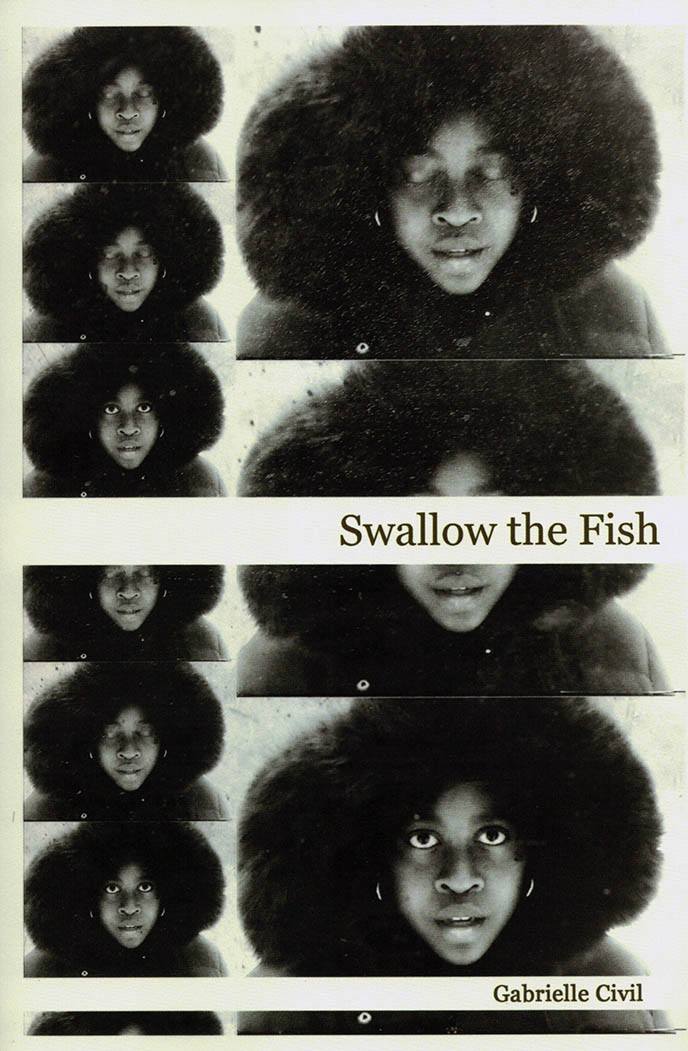
Swallow the Fish
Gabrielle Civil's Swallow the Fish is a memoir in performance art that explores the medium from within its beating heart. Adding its voice to black feminist conversations, it combines essays, anecdotes, and meditations with original performance texts to confront audience, motivation, and fears. Both joy and panic appear in Civil's world of performance, where neither walls nor city limits set the scope of the stage. Civil bares vulnerabilities and enthralls readers, asking essential questions and embodying dreams.
Published 2017.

I saw the world collapse and it was only a word
In I saw the world collapse and it was only a word, published on the occasion of his concert in December 2019 at Albertinum, Staatliche Kunstsammlungen Dresden, Hassan Khan articulates the communal yet individualized feelings of sadness and trouble before they coalesce into larger structures and institutions through a libretto for five vocalists, showing us the fleeting moments of the world as it is collapsing rather than only the dust of its collapse. The work is characterized by layered fragments that gesture toward a tonality and unity that nearly coalesce, but that dissipate as soon as they emerge. The collapsing word could be anything: the death of a family member; a defeated revolution; a heartbreak. It means something different from one place, one individual, to the next while still existing so broadly that it defines a more communal experience felt across the globe. A collapse from what? Rather than a doomsday message, it intimates that perhaps the world isn't really collapsing at all. Instead, Khan poses collapse as an ever-present underlying condition, challenging much contemporary intellectualizing that positions the current moment as somehow peculiar or extraordinary.
"1) Blame your partner for every disaster that has even occurred: G.
2) Oscillate in confusion between these two pitches using a glissando to come and go at a narcotic speed: A♭ C♭.
3) Argue with your best friend while looking at them using this progression: G – B – D – E♯.
4) Demand an apology using the progression: E – C – A♭♭ – F.
5) Beg for forgiveness by using the two highest pitches you can reach.
6) Ask a question by humming this progression: E♭♭ – D♭ – Ax – A♯.
7) Lose interest in everything using this progression: F – A – C – C♯."
Hassan Khan (born 1975 in London, lives and works in Cairo) works with image, sound, text, space and situation.
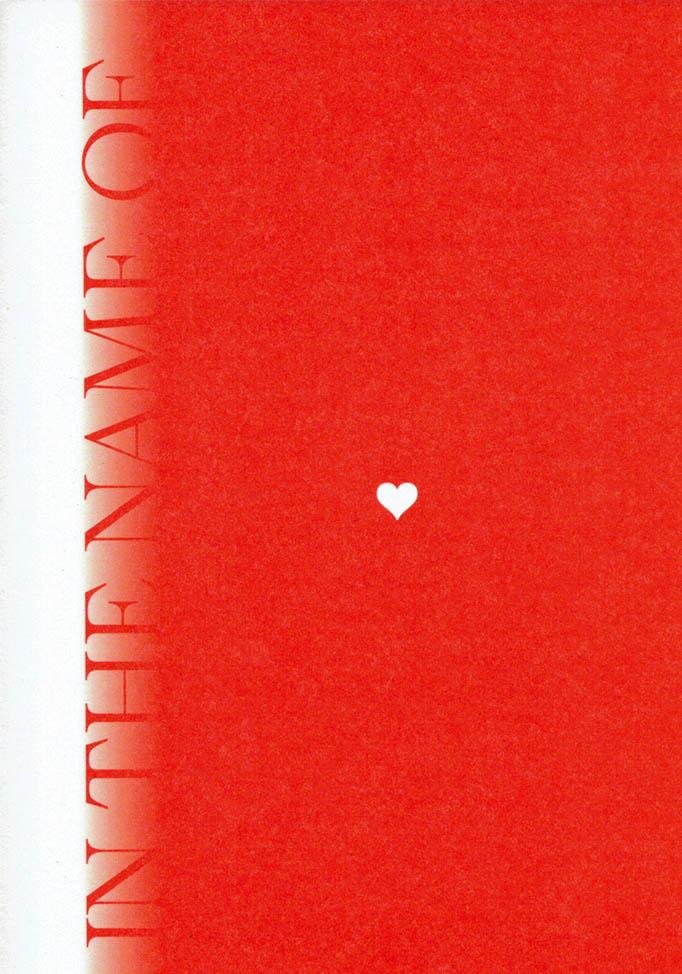
In The Name of Love
Who claims love?
The benign and seemingly innocent heart symbol hides a much more complex story than its surface suggests. The heart is often described as a universal symbol for love, yet its history suggests otherwise; it is closer to a corporate and political medium, embedded with contemporary imbalances of class, gender, and race.
This book wishes to reveal the intricacies and problematics surrounding the heart symbol and explores how technological, political and historical dominance has impacted the development of communication and our access to (online) information today.
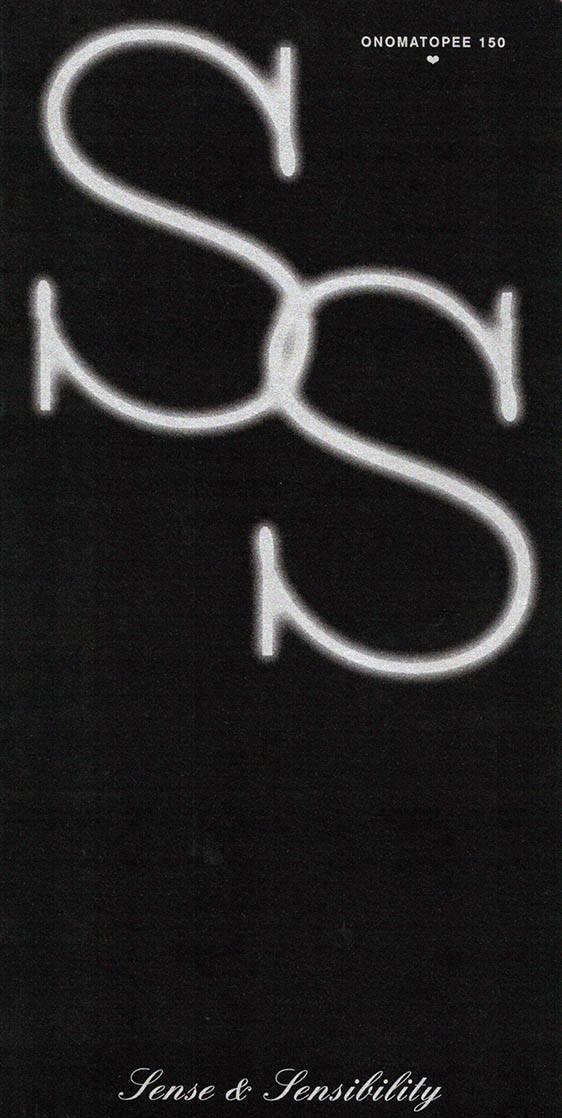
Sense & Sensibility
It’s because feminism has become a fashionable commodity now, that we’re in desperate need of a more inclusive and varied reflection on contemporary girlhood, gender equality struggles, and the relationship between gender, politics and philosophy.
This book documents the production and thought processes of 6 engaging artists and designers regarding the theme, and features a collection of essays by artists and academics, writers and rioteers, curators and journalists.
With contributions by Mandy Roos, Gabriel A. Maher with Roberto Pérez de Gayo and Carly Rose Bedford, Olle Lundin, Janina Frye, Camille Auer, Barbara Bolt, Daantje Bons, Charlotte van Buylaere, Ece Canlı and Luiza Prado de O. Martins, Victoria Ledig, Alicja Melzacka, Nina Power, Barbara Smith for Nasty Women and Aynouk Tan.
Edited and curated by Pernilla Ellens
Graphic design by Virginie Gauthier
Made possible thanks to the municipality of Eindhoven and the province of Noord-Brabant.

Blood
Six years in the making, 'BLOOD' is the first comprehensive English translation of the poems of Danish art historian, communist activist, and writer R. Broby-Johansen.
Translated, edited, and designed by Line-Gry Hørup, Broby-Johansen’s poems are accompanied by a series of full colour photographs by Amsterdam photographer Johannes Schwartz, which document the pair’s trip to Brody-Johansen’s recently established archive. So recent, that they were in fact the first to view it. 'BLOOD' was made possible with the support of Stimuleringsfonds and the Danish Arts Foundation.
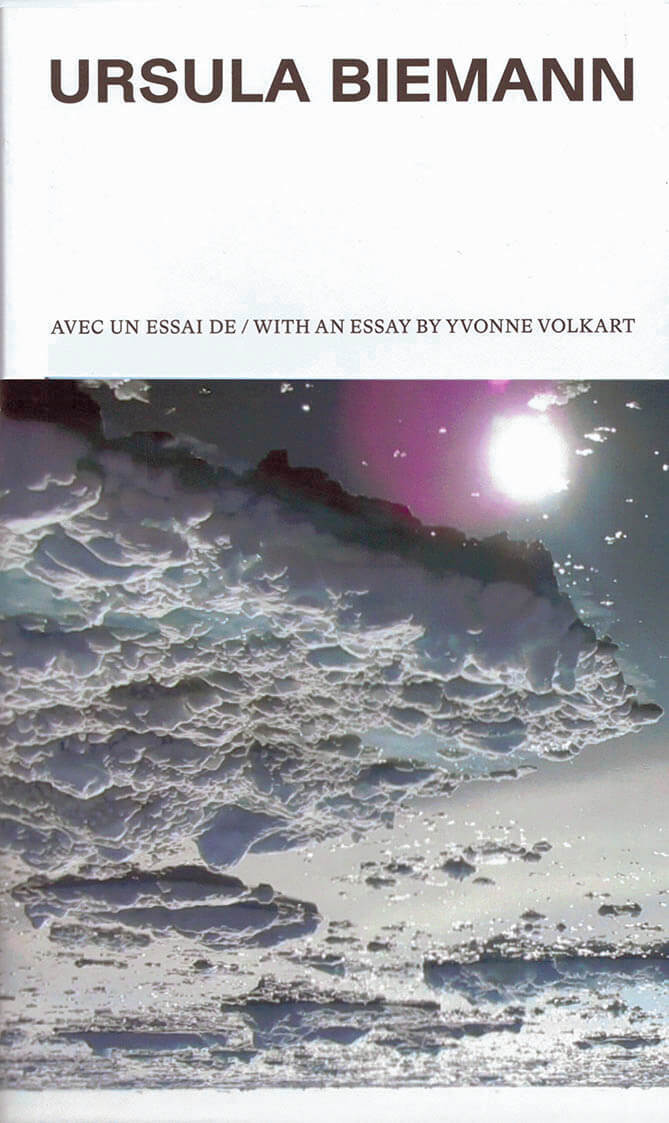
Ursula Biemann
A notebook based on Ursula Biemann's latest film, Acoustic Ocean, an expedition to the depths of the Arctic Ocean in search of interspecies communications.
32 p, ills colour, 14 x 23 cm, pb, French/English
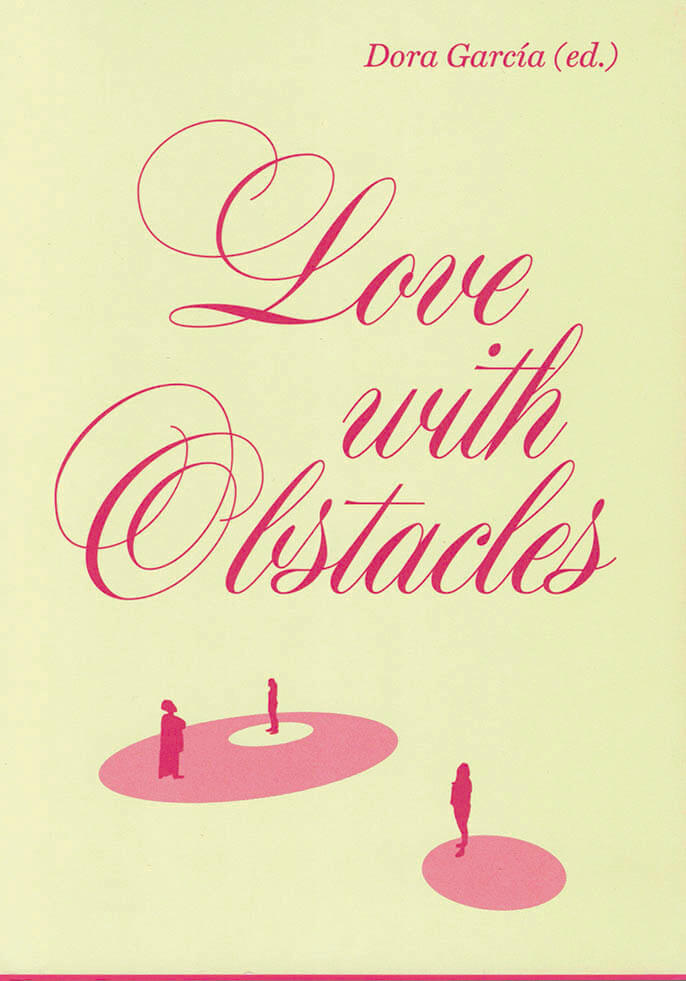
Love with Obstacles (Amor Rojo)
This is Spanish artist Dora García’s collaborative research on the life and legacy of Alexandra Kollontai (1872–1952), a socialist, activist, feminist, and intellectual. As a Soviet ambassador from 1922 to 1945, she advocated the sexual and social emancipation of women, and implemented many measures women continue to fight for today, such as legalising abortion and protecting women’s rights. Her writings found special resonance in Latin America, where her influence is still felt in contemporary feminist struggles.
The essays “On the Dragon” and “White Bird” are translated into English here for the first time, and are published alongside a selection of poems by Anna Akhmatova.

Decoding Dictatorial Statues
Decoding Dictatorial Statues, a project by Korean graphic design researcher Ted Hyunhak Yoon, is a collection of images and texts revolving around the different ways we can look at statues in public space. How can we decode statues and their visual languages, their object hood and materiality, their role as media icons and their voice in political debates?
Anticipating to current debates the book responds to urgent concerns about the representation of our heritage by not only asking us to examine what history to put on a pedestal, but to also consider the visual language of the statue itself. Decoding Dictatorial Statues therefore offers opportunity to level with the actual affairs the statues promote. In parallel to this deconstruction of the politics of a statue’s gestures the project discusses symbolic notion of culture and design by offering opportunity to another, and more cross-cultural understanding.
Ted Hyunhak Yoon(b.1987) is a graphic designer∙researcher based in Seoul(KR)∙Maastricht(NL). He graduated from MA Visual Communication, Royal College of Art in London, UK. From April 2017 onwards, he is a participant of a residency programme in Jan van Eyck Academie, Maastricht, Netherlands.

Every Time I Am Away From The Internet, I wonder if I am loved
You know the feeling : you’re online, right, and for no particular reason, you start to feel weird. Like something glorious is about to happen. And then, just like that, it fades, the glory has passed; now you feel sad. Did you miss it?
Oh, what a time to be alive. I love this life. I sometimes wonder whether it loves me back, but I try and convince myself that such things don’t matter. Nothing does, and that’s the best part.
Well, anyway, this is an exploration of some of the feelings that could crush us in the digital 21st century.

Footfall Almanac 2019
The Footfall Almanac 2019 collects observations, objects and other traces to instigate a discussion on surveillance techniques currently deployed in shopping malls, and during public major events in Brussels.
Wireless tracking of mobile phones has become a common method to monitor crowds without requiring explicit permission or active cooperation. Private companies, as well as civil agencies, use it to keep a close eye on the movements of city dwellers through public spaces, the former to forecast sales and the latter for crowd management purposes.
The Footfall Almanac 2019 observes this encounter of actors and predictions in their shared technologies and terminologies.
With contributions by: Femke Snelting and Dennis Pohl.
This project was initiated on invitation from Constant VZW who has been invited by 431 Architects to participate in The New Local, part of the Precarious Pavillions in the context of Kaai Theater’s Festival: CITY:LAND.
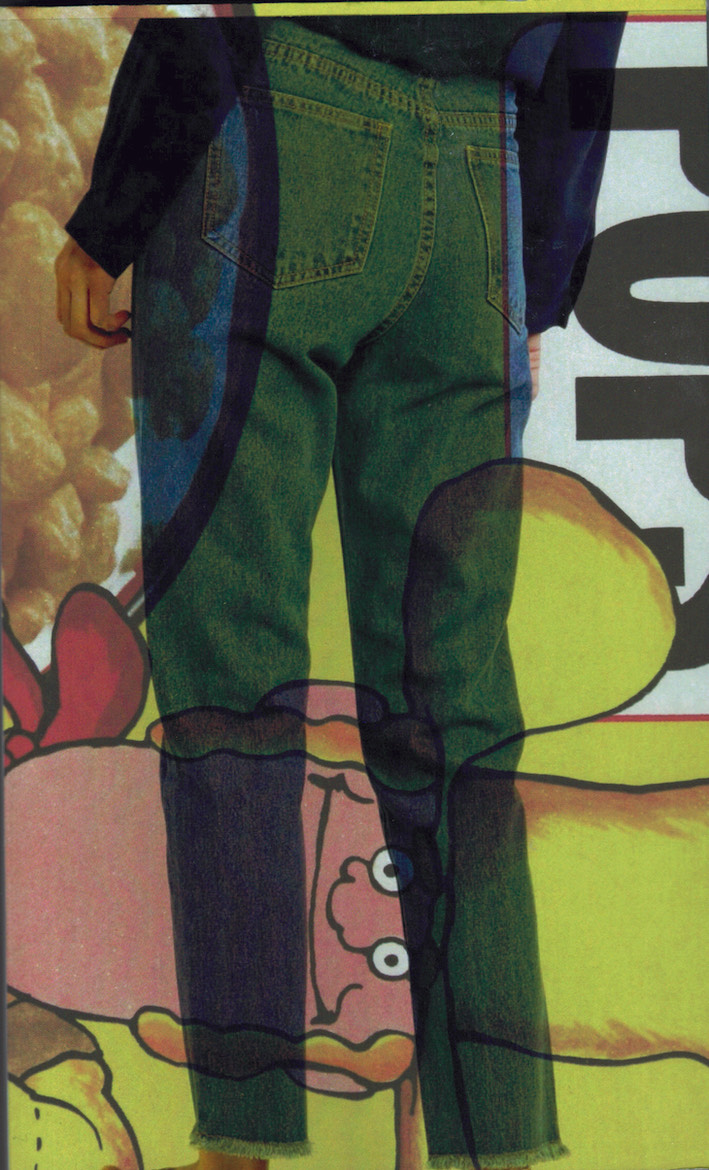
Homophone Dictionary
Homophone Dictionary was originally a file that is compiled by the now 96-year-old former schoolteacher Susan Nixon. She has build up many collections throughout her life, almost all of them exist out of objects, except one: after her retirement she compiled a word document that by now exist out of almost 1000 homophones; two, or more words that you pronounce similar but have a different meaning, often the spelling is also different.
The document is structured as a dictionary and the homophones are illustrated with examples that are based on autobiographical information. The structure of Homophone Dictionary also refers to speech therapy exercises and concrete poetry.
“As a student nurse learning medical terminology, I became fascinated with understanding the roots of words. When I had a young family, words were a principal source of entertainment: it was not unusual for one of the children to slip from their chair at the dinner table and fetch a dictionary in order to settle a dispute or satisfy someone’s curiosity. Then I became a teacher and brought this love of words into the classroom. My habit of word collecting became the children’s habit – my pupils became ‘word-lovers’ and ‘list-makers.’
I casually collected homophones for years. When introducing homophones into the classroom, the kids found definitions dull; the typical reaction was, ‘Yes, but give me a sentence using the word!’ and this idea emerged: a book of sentences demonstrating the meanings of homophone pairs or sets.”
Author Sue Nixon, editor Riet Wijnen, Offset print
20,4 × 12,4 cm, 423 pages
edition of 500
Published 2020

FUNGI
Dries Segers photographed all tangible fungi organisms in Dudenparc Brussels. Fungi are the oldest living species on our planet. They build and spread their communities across human borders continents laws … They take over land without asking permission. They clean up toxic messes in disturbed landscapes and shake the land back to life to create livable grounds for animals plants and maybe humans. They have the power to transport energy between weaker and stronger trees to keep forests alive or to kill them. Their spores are invisible and spread and spread and spread.
“The uncontrolled lives of mushrooms are a gift — and a guide — when the controlled world we thought we had fails.” — Anna Lowenhaupt Tsing
Published 2019
36 pages 28×42 cm
design: Chloé D’hauwe & Ine Meganck
text: Hannah De Meyer
print: Stockmans Duffel

Off by Heart
Between 2014 and 2016, the artist Wendy Morris started off on different walks along the west coast of Europe, following the path of a family of Huguenots during the repression after the Edicts of Nantes at the end of the 17th century. Throughout her walks, Morris drew new maps and routes of the places visited by the Huguenot refugees, who just as today passed through Calais and Dunkerque in France, moving on to Blankenberge, Zeebrugge and then Vlissingen as their final destination in the Netherlands. Then and now again, these ports and places were known as escape routes towards a better future.
It is their experiences that Morris tries to elucidate via carefully selected texts fragments, recited psalms and testimonies that are juxtaposed with official publications and regulations dictated by the Catholic Church against these Huguenots. The artist also mapped her own route while simultaneously making notes and collecting samples of grass, trees, seeds, plants, and the like, which may have been used by the refugees to heal the daily injuries caused by the long trip.

Le Chauffage — Issue #1
Le Chauffage (french for “The Heater”) is an artist-run publication based in Brussels. It is conceived as a cross-continental, community oriented platform. Bringing together the work and writing of artists / friends from different cities, Le Chauffage intends to spark discussions and fuel casual forms of critical discourse.
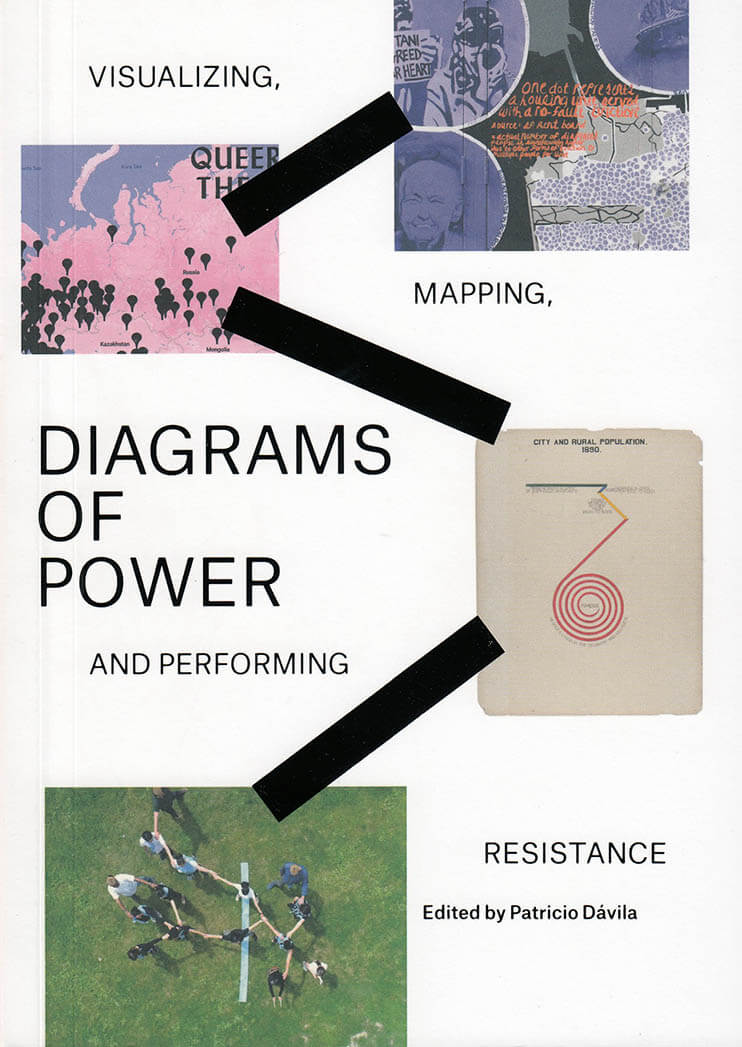
Diagrams of Power
Diagrams of Power: Visualizing, Mapping, and Performing Resistance, brings together the work of designers, artists, cartographers, geographers, researchers and activists who create diagrams to tell inconvenient stories that upset and resist the status quo.
Edited by Patricio Dávila. Words and works by Joshua Akers, Burak Arikan, Josh Begley, Joseph Beuys, Alexis Bhagat, Vincent Brown, Bureau d’Études, Teddy Cruz, Department of Unusual Certainties, Peter Hall, Alex Hill, W.E.B. DuBois, Patricio Dávila, Catherine D’Ignazio, Forensic Architecture, Fonna Forman, Terra Graziani, Iconoclasistas, Lucas LaRochelle, Eliana MacDonald, Julie Mehretu, Lize Mogel, Ogimaa Mikana, Margaret Pearce, Laura Poitras, Philippe Rekacewicz, Sheila Sampath, and Visualizing Impact.

Aphasia
Aphasia is a work of art about racism and intolerance, exposing the banality and triviality of evil. The films challenges us to look (literally) more attentively and to question our own individual and collective position. Aphasia is a call, not for punishment or outrage about the crimes committed during colonial times, the Holocaust or the atrocities in Bosnia during the Yugoslavian wars. Rather, it is a call to break the collective silence, and to actually look at the blind spots that seem to have become a fundamental part of our European identity.
Texts by Branka Benčić, Berber Bevernage and Eline Mestdagh, Jelena Jureša, Barbara Matejčić, Asa Mendelsohn, Rolf Quaghebeur.

In The Shadow Of Forward Motion
David Wojnarowicz's In the Shadow of Forward Motion was originally published as a photocopied zine/artist's book to accompany an exhibition of the same name at PPOW Gallery in 1989. Despite its meager print run of just 50 copies, the publication has garnered a legendary status, and for good reason.
In it we find, for the first time, Wojnarowicz's writing and visual art, two mediums for which he is renowned, playing off each other in equal measure. We glimpse the artist's now iconic mixed-media works, with motifs of ants, locomotives, money, tornados and dinosaurs, juxtaposed with journal-like texts or "notes towards a frame of reference" that examine historical and global mechanisms of power symbolized through the technology of their times.
Wojnarowicz uses the fractured experience of his day-to-day life (including dreams, which he recorded fastidiously) to expose these technologies as weapons of class, cultural and racial oppression. The artist's experience living with HIV is a constant subject of the work, used to shed light on the political and social mechanisms perpetuating discrimination against not only himself, but against women and people of color, who faced additional barriers in their efforts to receive treatment for the illness. Rooted in the maelstrom of art, politics, religion and civil rights of the 1980s, the book provides a startling glimpse into an American culture that we have not yet left behind. Félix Guattari provides an introduction.
Painter, photographer, writer, filmmaker, performance artist, songwriter and activist, David Wojnarowicz was born in Redbank, New Jersey, in 1954 and died of AIDS in New York in 1992. The author of five books—most famously Close to the Knives: A Memoir of Disintegration—Wojnarowicz attained national prominence as a writer and advocate for AIDS awareness, and for his stance against censorship.
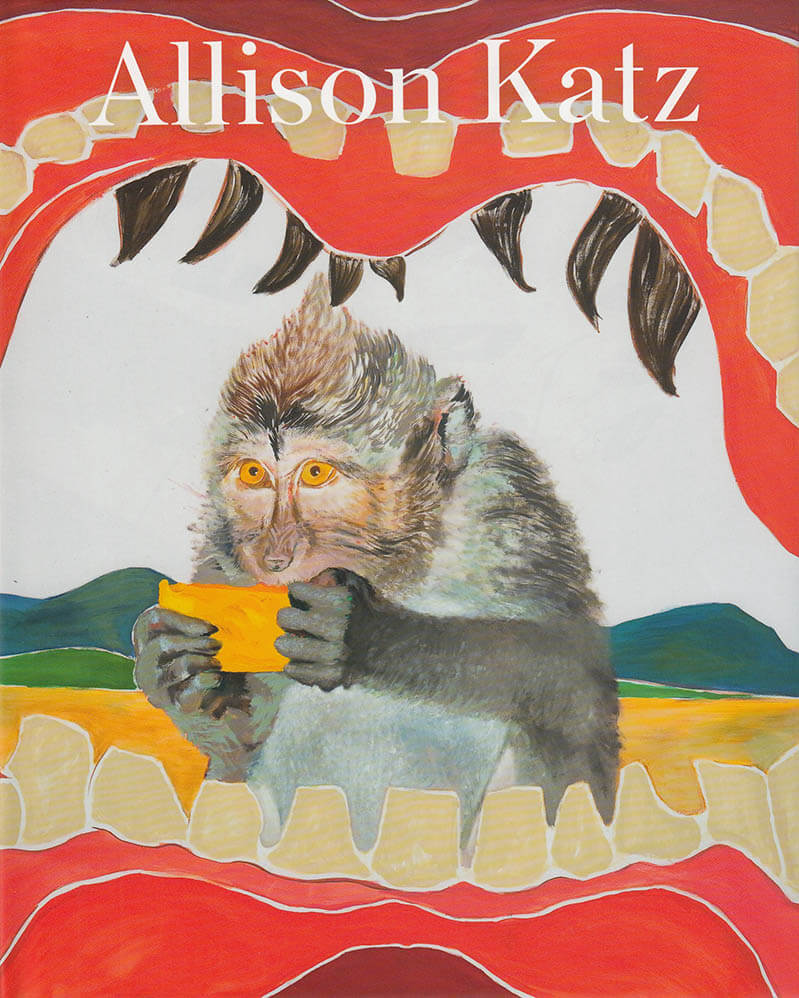
Alison Katz
This first comprehensive monograph encompasses the manifold painterly practice of Allison Katz. Gathering together Katz's successive bodies of works since the beginning of the 2010s, the publication includes essays by Oakville Galleries director Frances Loeffler, art critic Kirsty Bell, Canadian poet Lisa Robertson, and The MIT List Visual Arts Center Director Yuri Stone.
Texts by Kirsty Bell, Allison Katz, Frances Loeffler, Lisa Robertson, Yuri Stone, Camilla Wills.
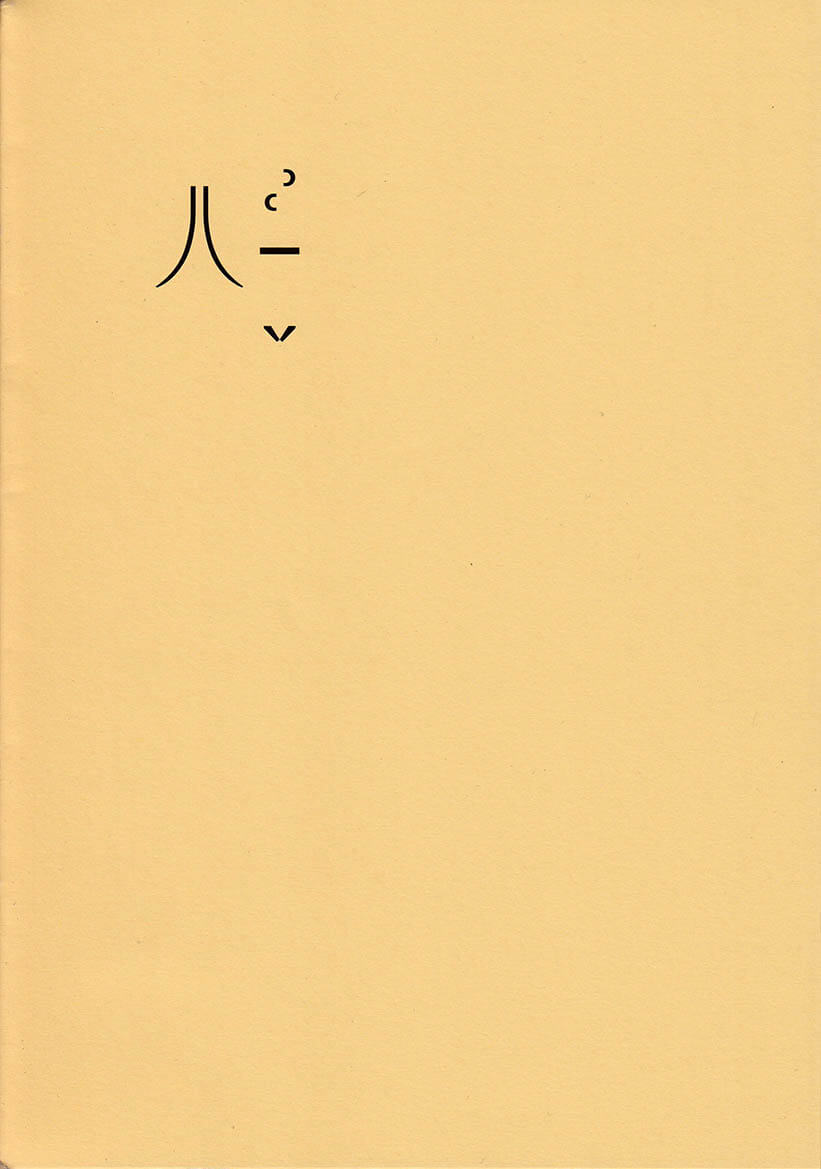
Backward Sway
This publication is part of Backward Sway | Upper Beam | Forward Swivel | Lower Bound - a site specific exhibition by Marie Raffn realized at Theatre Academy Helsinki in February 2019. The publication is a score of performative action developed in correspondence with the exhibition and the performance; Reading and Interpretation of - and inside - a spatial score by dancers Taru Miettinen and Aino Puhonen which took place during its opening days.

The Imaginary Republic
The Imaginary Republic is an artistic research project focusing on questions of social practice. In particular, it considers the creative and restless imaginaries underpinning our political selves and argues for a deeper engagement with what Elena Loizidou terms “dream-action”: the figurative and poetic staging of world making activity.
The publication brings together participating artists Tatiana Fiodorova, Octavio Camargo / Brandon LaBelle, the Sala-Manca Group, and Joulia Strauss, whose practices engage situations of struggle and autonomous cultures through a range of methods and approaches. From social fictioning to camouflaged interventions, collaborative pedagogies to gestures of care, their works propose unlikely paths of mutuality. The publication includes documentation of an exhibition held at Kunsthall 3,14 in Bergen, as well as key essays and works by theorists and artists Rhiannon Firth, Hélène Frichot, Marysia Lewandowska, Gerald Raunig, Raimar Stange with Oliver Ressler, and Manuela Zechner.
published in June 2020

on the future and the artist-run spaces
Artists, curators and writers describe their vision on the role of artist-run spaces for the future and discuss their own position in the world of art. The authors weigh in on the importance of artist-run spaces and reach out to anyone looking for alternative ways of thinking, working and living together.

Forms of Public Privacy
Forms of Public Privacy is part of the larger FORMAT 2019 exhibtion ‘Changing Attitudes’ in Z33, Hasselt. As a critique on the current urban trend to overpragram and overdesign Belgium cities, and Western cities in general, a reasearch is done into five cases of abandoned and un-maintained spaces in Brussels. In the exhibition a series of sculptural models show architectural elements of the investigated spaces that provide a certain spatial intimacy and public privacy. These models, together with photographs of Axel de Marteau and a publication, argue for the value of these abandoned and un-programmed spaces within an urban setting. Their informal programs such as hangout spots, living spaces and meetings spaces form a vital part of the social spaces and commons of our cities.
This is the publication to that research.
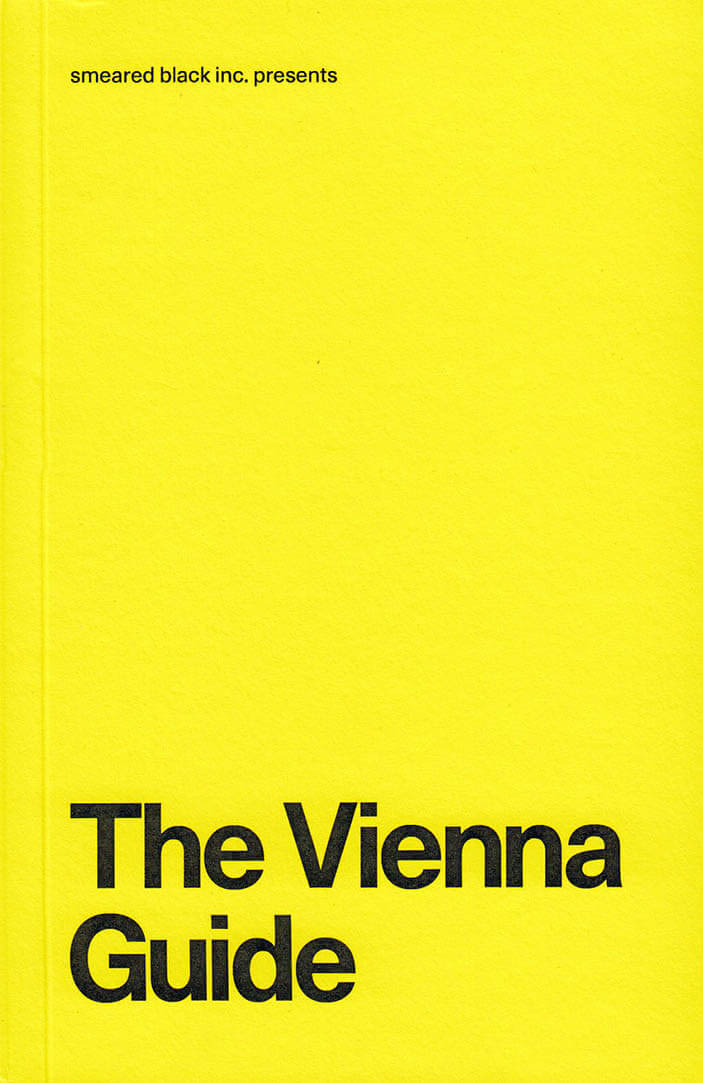
The Vienna Guide
The Vienna Guide is conceptually built upon ‘travel notes” compiled and edited on the occasion by artist Tony Cokes. Adopting the point of view of the flaneur, Cokes creates a speculative image of Vienna by appropriating and meshing non-art, historical figures, touristic clichés and club nights, all entwined in technological commentary. This distant gaze – Cokes hasn’t visited Vienna in the last 20 years – facilitates an aerial view of the complexities and unique traits that characterizes it. Commissioned by Attilia Fattori Franchini the Guide proposes to approach Vienna – and any urban site – as a discursive platform for future possibilities and identities.
The Vienna Guide by Tony Cokes comprises 3 stickers of video stills of Cokes’ videos Could you visit me in dreams? (2018), published in an edition of 150 + 25.